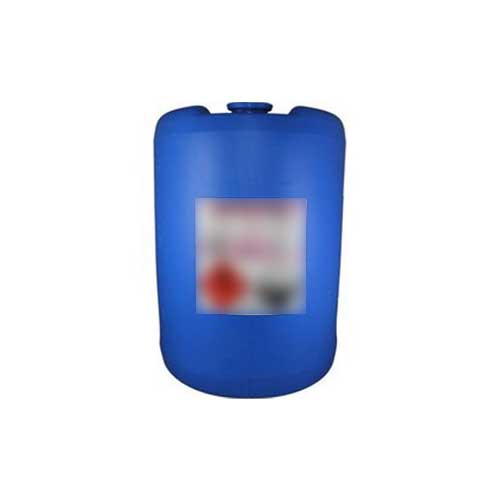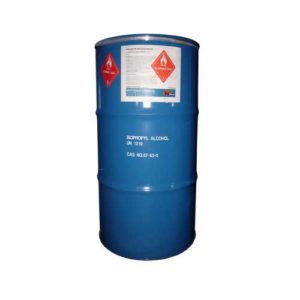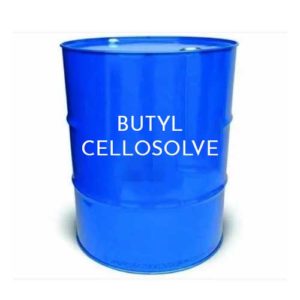METHYL ETHYL KETONE (MEK) – (C4H8O)
ABOUT:
MEK is typically produced via the dehydrogenation of secondary butanol.
- The first step is the dehydrogenation of n-butane to produce 2-butanone (MEK’s precursor) and hydrogen gas. This step is usually carried out using a copper chromite catalyst.
- The 2-butanone is then converted to MEK by dehydrogenation. This reaction is typically carried out using a catalyst containing copper and zinc.
- The MEK is then purified through a distillation process to remove any impurities and obtain the desired product.
PHYSICAL PROPERTIES:
Appearance: Colorless liquid
Odor: Sweet mint- or acetone-like odor
Molecular weight: 72.11 g/mol
Boiling point: 79.6°C (175.3°F)
Melting point: -86°C (-123°F)
Density: 0.805 g/cm³ at 20°C
Vapor pressure: 93.3 mmHg at 20°C
Viscosity: 0.41 cP at 20°C
Flash Point: -9°C (16°F)
Autoignition Temperature: 538°C (1000°F)
CHEMICAL PROPERTIES:
- MEK is soluble in water, ethanol, ether, and many other organic solvents
- MEK can react with strong oxidizing agents and can form explosive peroxides when exposed to air or light.
- MEK is a neutral compound with a pH of around 7.
- MEK is a stable compound under normal conditions, but it can decompose under high temperatures and pressures.
APPLICATIONS:
PAINTS AND COATING:
- MEK is used as a solvent for a variety of resins used in the formulation of paints and coatings. It can dissolve many types of resins, including acrylics, polyurethanes, and alkyds, making it a versatile solvent in the industry.
- MEK is used to prepare surfaces for painting and coating by removing any contaminants or residual oils. This helps to ensure proper adhesion of the coating to the surface.
- MEK is used to thin or reduce the viscosity of certain types of coatings, such as lacquers, to ensure a smooth and even application.
PRINTING INKS:
- MEK is used as a solvent for various types of resins used in the formulation of printing inks, such as nitrocellulose, vinyl resins, and acrylics.
- MEK is also used as a drying agent in printing inks, helping to speed up the drying process and prevent smudging or smearing of the ink.
- MEK is used to formulate specialty inks, such as conductive inks used in the electronics industry.
CHEMICAL MANUFACTURING:
- MEK is used to produce methyl ethyl ketoxime (MEKO), which is used as an anti skinning agent in the paint industry.
- MEK is used in the production of adhesives and sealants.
PETROLEUM REFINERIES :
Some of its main uses in a refinery include:
-
- Solvent for deasphalting: MEK is commonly used as a solvent to help remove heavy hydrocarbons, such as asphalt, from crude oil during the refining process.
- Solvent for dewaxing: MEK is also used as a solvent in the dewaxing process to remove waxes from lubricating oil, diesel fuel, and other distillate products.
- Extraction of aromatics: MEK can be used as a selective solvent to extract aromatic hydrocarbons from streams of refinery products, such as naphtha.
PHARMACEUTICALS:
- Methyl ethyl ketone (MEK) is used as a solvent for various active ingredients and excipients in the manufacturing of drugs and medicines.
- MEK is used in the production of antibiotics, such as penicillin and streptomycin, as a solvent for the active ingredients during the fermentation process.
- It is used in the manufacture of steroid hormones, such as testosterone and estrogen, where it is used to extract and purify the hormones from animal or plant sources.
ELECTRONICS:
- MEK is a solvent used in the manufacturing of electronic parts including printed circuit boards and LCD panels. In addition to dissolving and removing extra adhesive and other residues, it is used to clean and prepare surfaces.
- MEK is used as a thinning agent for some electronic coatings and adhesives, which are used to protect and insulate electronic components.
CLEANING PRODUCTS:
- Heavy-duty degreasers and solvents used in the automotive, aerospace, and other production industries to clean components, machinery, and equipment contain MEK. Industrial-strength cleansers and removers, which are used to clean surfaces and get rid of tough stains and adhesives, also contain it.
- MEK is also used in household cleaning products, such as paint strippers and adhesive removers, which are used to clean surfaces and remove paint and other coatings. It is also used in certain specialized cleaning products, such as electronics cleaners and circuit board cleaners, due to its ability to remove dirt and contaminants without damaging sensitive components.
RUBBER INDUSTRY:
- MEK is a preferred solvent for synthetic rubber production because of its ability to dissolve a wide range of rubber polymers, including neoprene, nitrile, and butyl rubber.
- It also evaporates quickly, leaving behind a clean and dry surface on the rubber product.
- MEK can also be used as a plasticizer in rubber production, which helps to improve the flexibility and strength of the final rubber product.
SAFETY MEASURES:
- MEK should be used in a well-ventilated area or in a fume hood to prevent the buildup of vapors. Avoid inhaling the vapors as they can cause respiratory irritation and other health effects.
- Proper PPE should be worn when working with MEK. This includes gloves, safety goggles, and a respirator if working in an area with poor ventilation.
- MEK is a flammable liquid and should be stored and used away from sources of heat, sparks, or flames. Fire extinguishers should be readily available in case of a fire.
- MEK should be stored in a cool, dry, and well-ventilated area away from sources of ignition, incompatible materials, and oxidizing agents.
- MEK should be handled carefully to avoid spills or leaks. If a spill occurs, it should be cleaned up immediately using absorbent materials and proper PPE.
- MEK should be disposed of in accordance with local regulations. Do not pour it down the drain or dispose of it with regular trash.
PACKAGING:
- Methyl ethyl ketone (MEK) is stored and transported in MS drums (Mild Steel Drums) and it comes in 165kgs.






Reviews
There are no reviews yet.